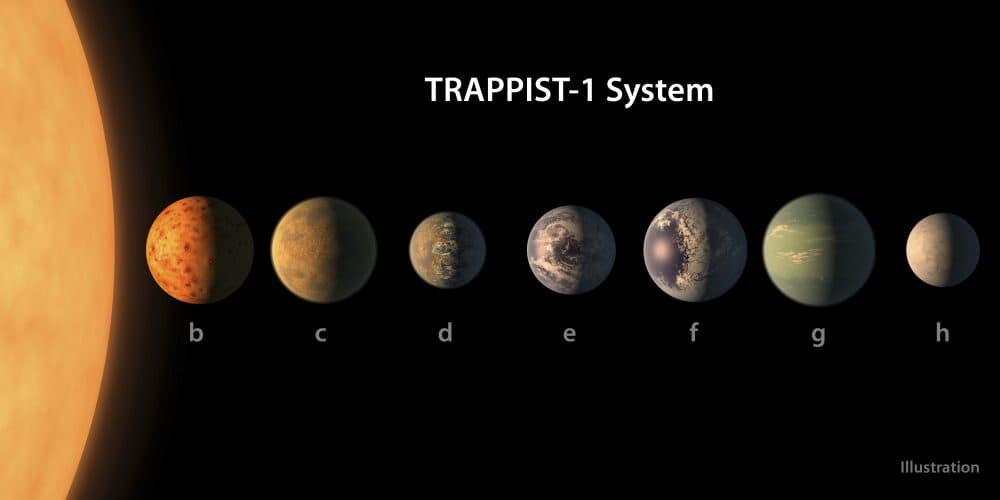Advertisement
A New Solar System With 7 'Earthlike' Planets Discovered
Resume
There is news today from a group of scientists who have discovered a new solar system.
It's just 39 light years away -- close, by cosmic standards -- and the system has seven warm, rocky and Earth-like planets orbiting a star called TRAPPIST-1. It's the first time astronomers have ever found so many terrestrial planets orbiting a single star, and it could be a step toward finding another planet like our own.
Sara Seager, professor of planetary science and physics at Massachusetts Institute of Technology, spoke today at a NASA press briefing, saying, "With this discovery, we've made a giant accelerated leap forward in the search for habitable worlds and life on other worlds."
Guest
Kelly Beatty, senior editor at Sky & Telescope. He tweets @NightSkyGuy.
This segment aired on February 22, 2017.